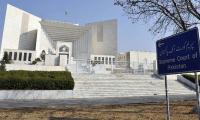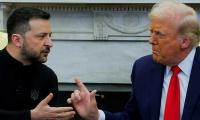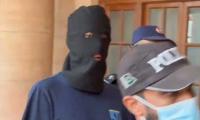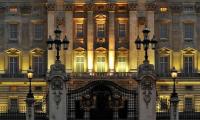LAHORE: The ghost of communal violence has once again surfaced in Karachi to some extent, though concerted and timely efforts of Pashtun and Sindhi leaders may help the bustling port city enjoy the long-elusive calm it has seen after decades of linguistic, ethnic and other sort of violence.
The history of rioting and violence in Karachi is as old as Pakistan. Terrorism has also taken a heavy toll on this humming metropolis after September 11, 2001, research shows. Here follows the chronology and timeline of these incidents which have not only played havoc with Karachi’s peace during the last 75 years, but have also sent shivers down the spines of this city’s residents:
In 1947, soldiers had patrolled the city streets in an effort to prevent clashes between the Mohajirs and the native residents of Sindh. This strife claimed over 170 lives. In January 1948, Karachi again found itself under the blanket of a 40-hour curfew as troops were called in to ensure tranquility.
On January 8, 1953, some students of the Democratic Students Federation brought out a procession from the DJ Science College and were fired at by police. The then government of Premier Khawaja Nazimuddin had to impose a curfew and send Army to quell the rioting that had killed at least nine persons in just 48 hours.
In July 1972, curfew was imposed here after at least six persons perished in clashes over the designation of Sindhi as the official language of Sindh. Overall, at least 30 were killed in four days.
On March 19, 1983, a partial curfew was imposed after renewed violence between two religious communities. At least 127 people were arrested.
In May 1986, a partial curfew was imposed as gunfights had erupted between Pushtuns and Mohajirs.
In November 1986, persistent communal violence between Mohajirs and Pashtuns had led to another curfew stint. Over 10 people were killed and law-enforcers were witnessed firing at the rioters and curfew violators.
On December 15, 1986, at least 20 people were killed in violence, leading to curfew in 21 areas. Five curfew violators were shot dead by the law-enforcers. At least 166 people died.
In May 1988, Karachi was again put under curfew after violence claimed 42 lives.
On October 3, 1988, curfew brought some temporary calm to the city hounded by recurring violence.
On December 16, 1988, a partial curfew was imposed after death toll from rioting surged to 10.
In February 1991, some 14 people were killed and 26 others wounded in ethnic violence.
On February 25, 1995, some 22 people were killed.
In December 1994, according to the United Nations High Commissioner for Refugees, the withdrawal of Army from Karachi three weeks ago had led to eruption of unprecedented violence.
The Army pullout ended a 29-month operation. Police and paramilitary forces appeared unable to stop the violence which led to deaths of over 90 officers and more than 750 civilians in 1994.
In June 1995, at least 17 people were killed in Karachi as violence erupted over the alleged gang-rape of a Mohajir girl. The girl had identified her main attacker as a local political leader.
For the past two months, Karachi had suffered from another wave of violence that resulted in the deaths of five to 10 people daily.
On August 2, 1995, bodies of 12 people were found in a mini-bus, while six others were killed in attacks by unidentified gunmen.
By December 1995, the consulates of Britain, France, Italy and Saudi Arabia had started closing their doors in Karachi after receiving violent threats from extremists.
In January 1996, nine people, including four activists of Mohajir Qaumi Movement, were killed in different parts of city.
On July 5, 2003, law-enforcers were once again ordered to guard the city under curfew, triggered primarily by the killing of nine people outside a mosque.
On May 7, 2004, a suicide bomber attacked a mosque in Sindh Madrassa-tul-Islam, killing 15 worshipers.
On May 31, 2004, a suicide bomber had blown up an Imambargah, killing 16 worshipers.
On May 31, 2005, six bodies were recovered from a fast-food outlet set ablaze by an angry mob after an attack on a mosque in the city.
It was probably in retaliation for the suicide attack on a mosque earlier in central Karachi where five people were killed.
On April 11, 2006, over 50 people, including religious scholars, were killed in a bomb explosion at a religious gathering celebrating the birthday of Prophet Muhammad (SAW) at Nishtar Park.
On December 28, 2009, at least 42 people were killed when a bomber struck a religious procession at M.A. Jinnah Road.
Between February and October 2010, ethnic and political clashes claimed more than 70 lives.
On January 25, 2012, three lawyers were killed near a city court by unknown gunmen.
On March 3, 2013, Abbas Town Karachi blast killed 51 people, including 28 members of a religious community.
Research further shows that violence in Karachi has claimed lives of many eminent Pakistanis over the years.
These include:
Globally-acclaimed Pakistani Qawwal Amjad Sabri, Dr Syed Wahidur Rehman (an assistant professor of Karachi University), woman activist Sabeen Mehmood, Dr Shakil Auj (Dean of the Islamic Studies, Faculty of Karachi University), a known local cleric Maulana Masood Baig (associated with the prestigious Jamia Binoria), Ali Akbar Kumaili (elder son of former Senator Allama Abbas Kumaili), noted religious scholar Allama Taqi Hadi Naqvi, SSP Karachi Crime Investigation Department Chaudhry Aslam, an MQM lawmaker Sajid Qureshi, Pakistan Tehreek-e-Inssaf’s Senior Vice President Zahra Shahid, Parveen Rehman (head of the Orangi Pilot Project), renowned industrialist Ali Asghar Rajani, another MQM legislator Syed Manzar Imam, SP Sindh Shah Mohammad, a Saudi diplomat, Hassan Al Kahtani, Geo Karachi reporter Wali Khan Babar, another MQM legislator Raza Haider, a religious scholar, Allama Hassan Turabi, a US diplomat, David Foy (he was killed just a day before the then American President George W. Bush was to land in Pakistan), a religious scholar and head of Jamia Binoria, Mufti Nizamuddin Shamzai, Dr Alay Safdar Zaidi (one of the country’s most well-renowned nephrologists), renowned American journalist Daniel Pearl, Syed Hassan Zaidi (Sindh Board of Technical Education Chairman), Syed Zafar Hussain (director research and development in Ministry of Defence), Shaukat Mirza (Managing Director Pakistan State Oil), Ehtishamud Din Haider (the then Pakistani Interior Minister Lt-Gen Moinuddin Haider’s elder brother), former Sindh Governor and an eminent philanthropist Hakim Muhammad Said, Shahid Hamid (a former Managing Director of KESC), late Premier Zulfikar Ali Bhutto’s son and the then Prime Minister Benazir Bhutto’s younger brother Mir Murtaza Bhutto, Justice Nizam Ahmed (a retired Sindh High Court judge), MQM Chief Altaf Hussain’s 66-year-old elder brother Nasir Hussain and his 28-year old nephew, Arif Hussain, former Muttahida Qaumi Movement MNA Ali Raza Abidi, Muhammad Salahuddin (Editor of Urdu weekly Takbeer) and the then MQM Chairman Azeem Ahmed Tariq etc.
In June 2013, a bomb targeting the convoy of then Sindh High Court judge Justice Maqbool Baqir (later elevated as Chief Justice Sindh High Court and now a sitting Supreme Court judge since February 2015) had exploded near Karachi’s Burns Road area. At least nine people were killed in this incident.
The judge had managed to live on despite sustaining serious injuries. Justice Baqir’s head was hit by ball bearings and glass shards in the explosion. The deceased included seven policemen, one Rangers personnel and Justice Baqir’s driver. It is imperative to note that on June 10, 2004, gunmen opened fire on a convoy of then Karachi Corps Commander Lt-Gen Ahsan Saleem Hyat, leaving 11 people dead. The Corps Commander escaped unhurt though a few of his security staff lost their lives in the incident.
Victims, aged 10, 12, and 15, were walking to school when a speeding Prado struck them
Committee was informed that there are currently 3,646 prisoners sentenced to death in Pakistan’s jails
A three-member bench of apex court headed by CJP Yahya and comprising Justice Shafi and Justice Miangul Hassan hear...
CM says KP govt was working to provide industries with various incentives, including cheaper electricity
Suspect identified as Hazrat Jamal, hailing from Peshawar, was found in possession of loaded firearm







